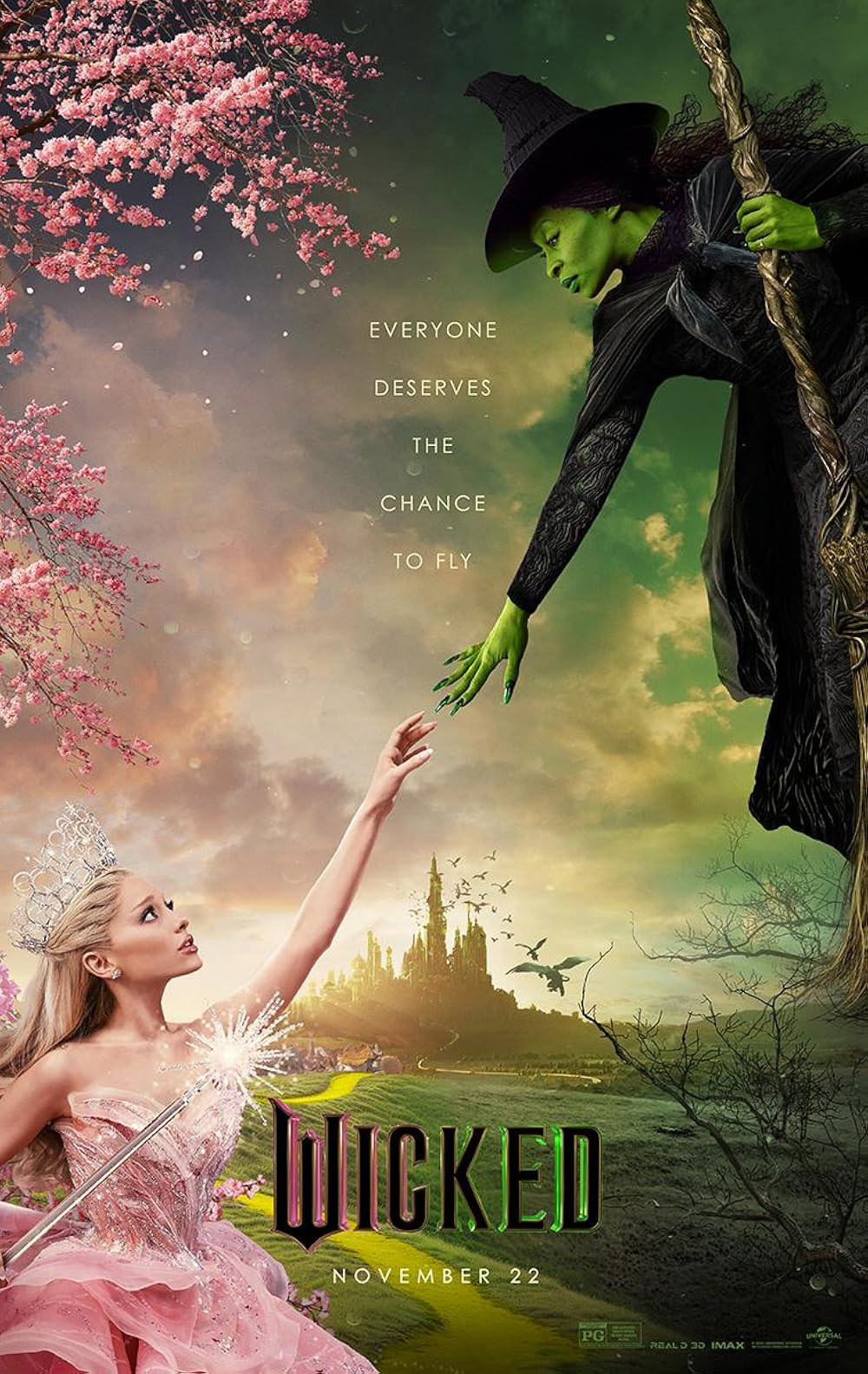
Over a decade after the musical “Wicked” first opened on Broadway, a film adaptation was released Nov. 22, starring Cynthia Erivo and Ariana Grande. The film excels in establishing a strong story, filled with powerful themes, beautiful visuals and fantastic music.
“Wicked” is the story of the Wizard of Oz is retold as a prequel from the perspective of Elphaba, the Wicked Witch of the West. After facing discrimination for her green skin color, Elphaba is given an opportunity to study alongside the “normal students,” eventually meeting the Wizard of Oz, who she learns is an evil, fraudulent leader, trying to use Elphaba’s powers to end the existence of sentient animals within Oz. The musical is split into two films, allowing writers to honor the entirety of the original musical, while also adding new depth and complexity.
“The way they adopted it from the original musical was perfect,” said senior Veronica Kwok. “I liked how they kept some things the same and how they adapted it from the book [The Wizard of Oz] as well.”
One of the most powerful elements was its strong, thought-provoking themes.
“I noticed [there] were a lot of themes of oppression about [the] lower class,” said senior Gavin Baquiran. “The animals were getting oppressed by the wizard. I also saw themes of discrimination because Elphaba [was] green. Other people are scared of her because of her skin color and treat her differently.”
Throughout the film, Elphaba’s green skin provides a compelling and direct allegory for racism, where she is constantly ridiculed and denied opportunities: a symbol also heightened by their casting of a black woman to play the lead. The underlying themes of racism force the viewer to question their preconceived notions of Elphaba’s place as a villain, depicting how society can be quick to villainize those who are different. The discrimination she faces allows her to be more compassionate towards another oppressed group throughout the film: sentient animals. They are silenced in classrooms, mutilated and enslaved by the Wizard of Oz. The viewers are forced to come to terms with their ability to follow the narrative that society chooses to build. The film as a whole depicts a counter-narrative to the original, iconic story of the Wizard of Oz, forcing the audience to question if evil is truly evil and good is truly good.
Not only does the film utilize the powerful narrative structure from the first movie, but it also utilizes the powers of cinema to enhance the film through the use of beautiful visuals, many without the use of computer-generated imagery.
“The sets were amazing, especially knowing they were all [real],” Baquiran said. “I liked the textures and how unique the costumes were … They’re really extravagant, big and unique from other films this year.”
With huge ensembles in every scene, the vibrant dance numbers were very satisfying. The directing staff always made Glinda and Elphaba stand out from the large ensemble visually through clever costuming and staging. Unlike on a stage with limited sets, the movie manages to expand the physical settings throughout the film. Whether Elphaba is running across a cliff’s edge, the munchkins are dancing around Munchkinland, Glinda and her entourage are strolling through school or the Emerald City citizens are marching around their beautiful, green town, every scene was visually satisfying.
The acting and vocal performances were another incredible element. As both leading actresses sang live, rather than lip-syncing, the musical numbers provided for astonishing, authentic vocal performances.
“I love the soundtrack of Wicked and having two great singers, Grande and [Erivo], sing all the songs was really amazing to hear,” said junior Neeharika Kumar. “Going into the movie knowing that they were singing most of their songs live as they were filming the movie was really fun to listen to while watching.”
Most notably, Grande’s performance as Glinda was not that of a pop artist, but a professional actress. Grande fully embodied the selfish, outgoing and attention-seeking popular girl that is Glinda. Her vocal capabilities were incredible, but her acting was a more shocking feat of talent. Erivo’s performance as Elphaba was similarly incredible, with an extremely powerful, dynamic voice to match Elphaba’s magical capabilities. However, the most remarkable part of their performance was the leading actresses’ phenomenal chemistry.
“The main theme of the whole [movie] was sisterhood and friendship,” Kwok said. “I liked how you could see the chemistry between [Erivo] and [Grande], and how they both just seemed really connected on and off-screen.”
One of the possible complaints is the one-year wait time between the two films, especially as the audience is quite eager after the thrilling first film.
“It leaves us on a gigantic cliffhanger and it leaves you wanting a lot more of the story, but you have to wait a year,” Kumar said.
Ultimately, the film was a very strong adaptation of the story Wicked. The directing staff attempted to honor and expand upon the original story by splitting the musical into two films to encapsulate the entire narrative, though at the cost of some disappointment from its audience. With a compelling narrative, beautiful visuals and remarkable leading actors, Wicked was overall a well-made, magical movie musical adaptation, worthy of four and a half out of five stars.




